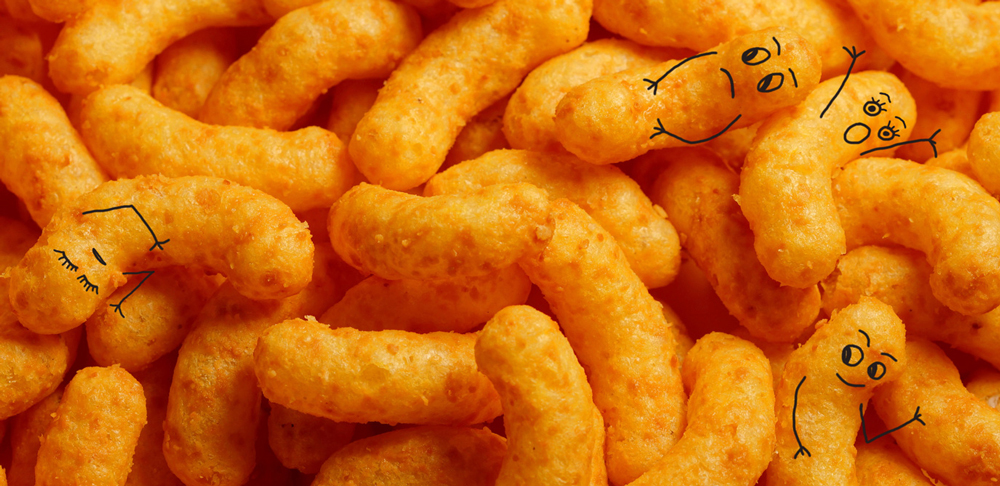

APPLICATION
Coating of snacks with fat, herbs, and spices
A snack is generally a cereal-based ready-to-eat treat, primarily savoury, to grab and eat on the go. Although simple in principle, the process delivers its best when finely adjusted.
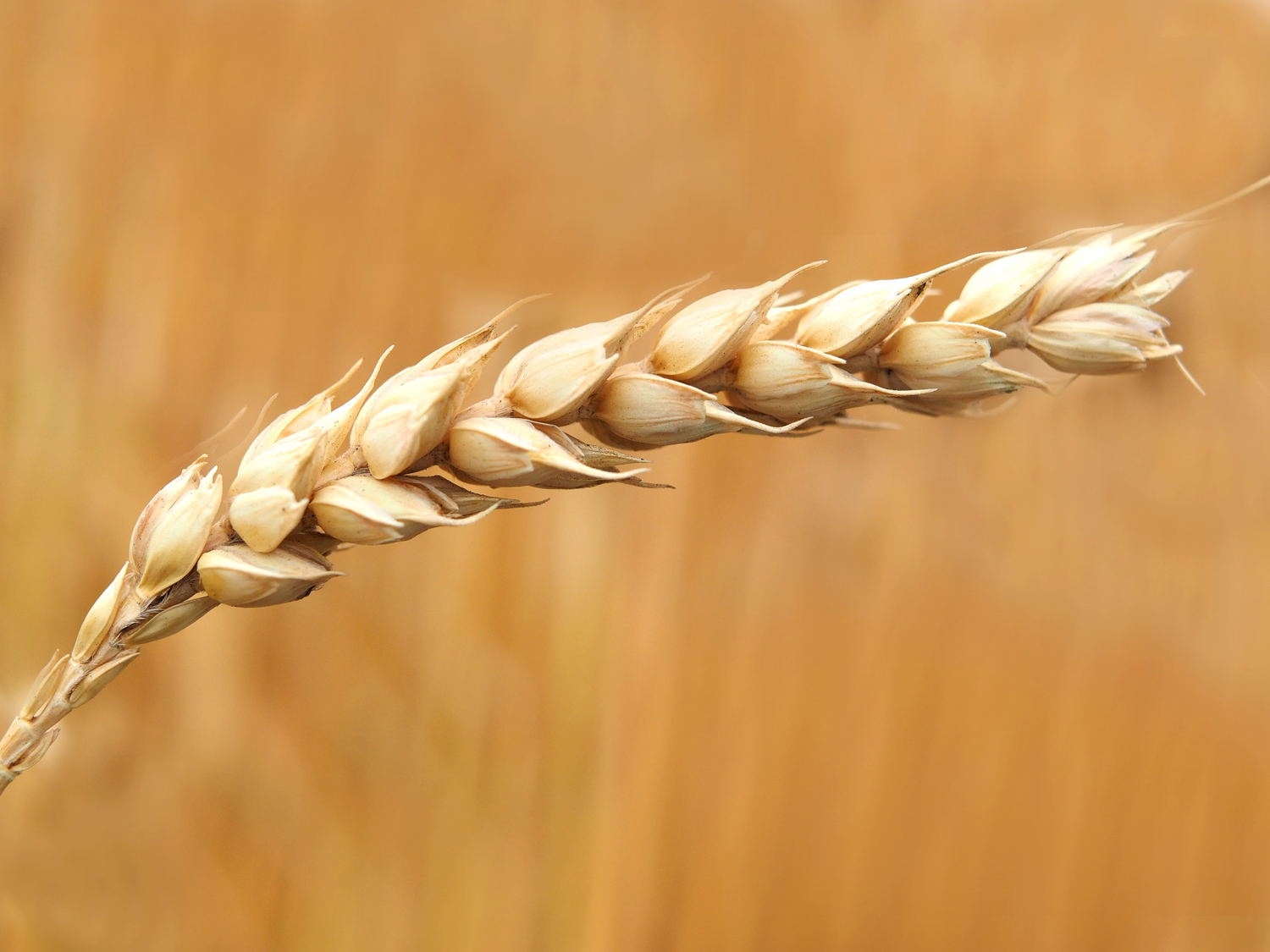

BASE
Core products
The core is made of a precooked and expanded cereal mix (corn, wheat, rice, potato…). Expansion is direct (high-pressure, short-time extrusion) or indirect (low-pressure extrusion, drying, expansion in hot oil or air). The resulting bulk density is very low: 0.05.
RECIPE
Ingredients
The liquid coating is prepared with the following:
- Vegetable oil
- Oil-soluble flavours
- Dry seasoning (spice mix) optionally
- A dry seasoning can be further applied:
- Salt
- A spices and herbs mix
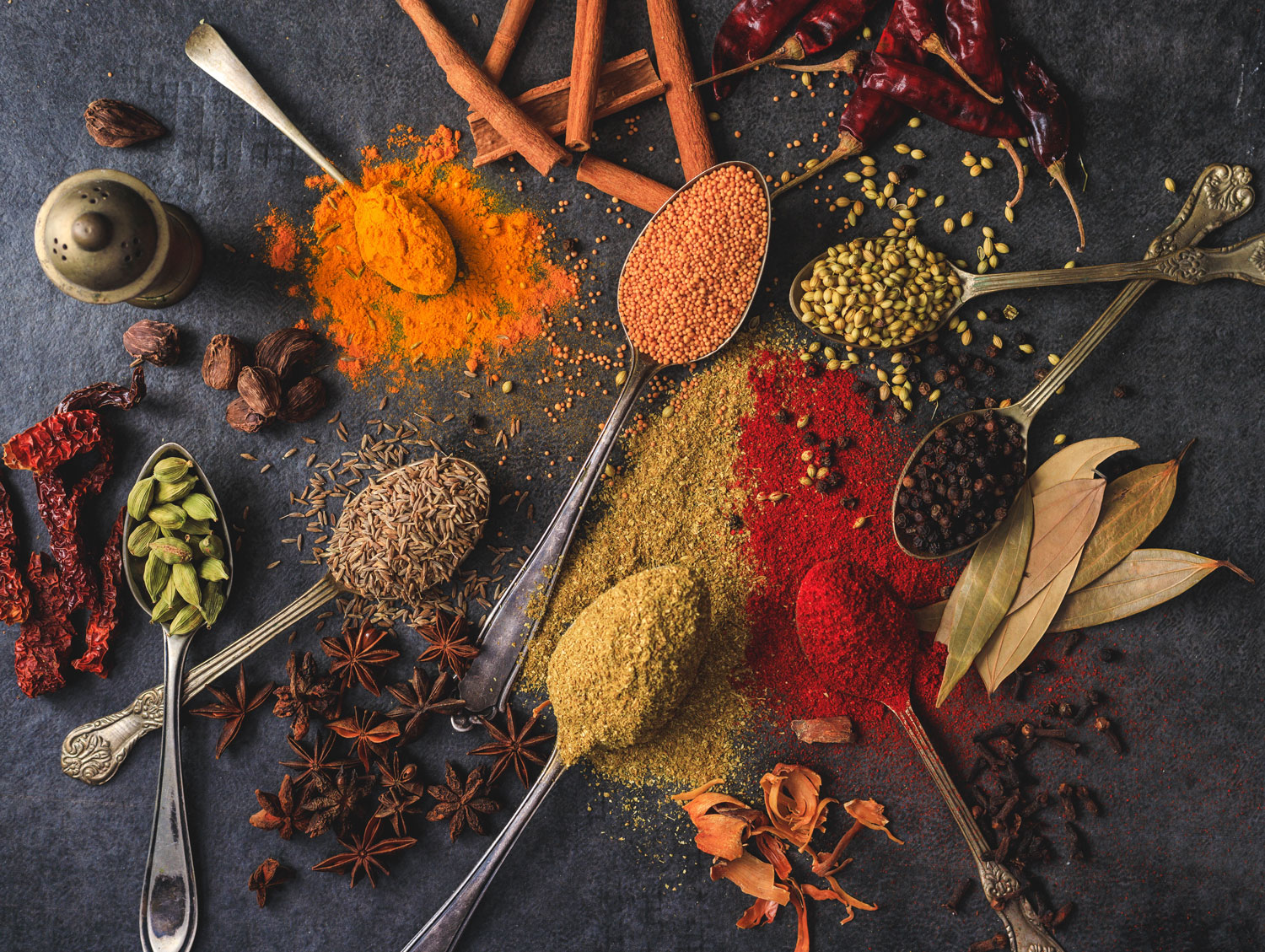





RECIPE
Ingredients
The liquid coating is prepared with the following:
- Vegetable oil
- Oil-soluble flavours
- Dry seasoning (spice mix) optionally
- A dry seasoning can be further applied:
- Salt
- A spices and herbs mix
PROCESS
How does it work?
The coating sequences are pretty simple and run as follows:
Step 1.
Consistent dosing of the snacks.
Step 2.
Liquid dosing and dispersion, often air-assisted, + 5 – 30%.
Step 3.
Powder dosing, +1 – 10%.
PROCESS
Coating system
Upstream. The snacks result from a cereal mix’s cooking, expansion, and drying. A single or twin-screw extruder carries it out in one single step. Alternatively, snacks can be precooked and dried like pasta and later expanded in hot oil or hot air.
Coating relies on the dispersion of the liquid and powder ingredients first, then on the mechanical friction caused by tumbling. Liquid and powder ingredients can be added separately.
One option is to mix finely ground spice powder into the oil and carry out just one application. This ‘slurry’ needs to be constantly agitated until it is applied. Ingredient dispersion can be enhanced by blowing air.
Dedicated spraying systems best disperse the liquid ingredients.
The powder can be dispersed with a vibratory tray or blown and airborne. In the latter case, an electrostatic gun can charge the particles and force the powder ingredient onto the snack bed.
Downstream. After coating, the product needs a short setting time for the oil to absorb and is ready for packaging.


PROCESS
Coating system
Tumbler corn curl Immequip.
PRODUCT EVALUATION
How do you measure your success?
Key quality features
The product is one of the most universal treats appreciated.
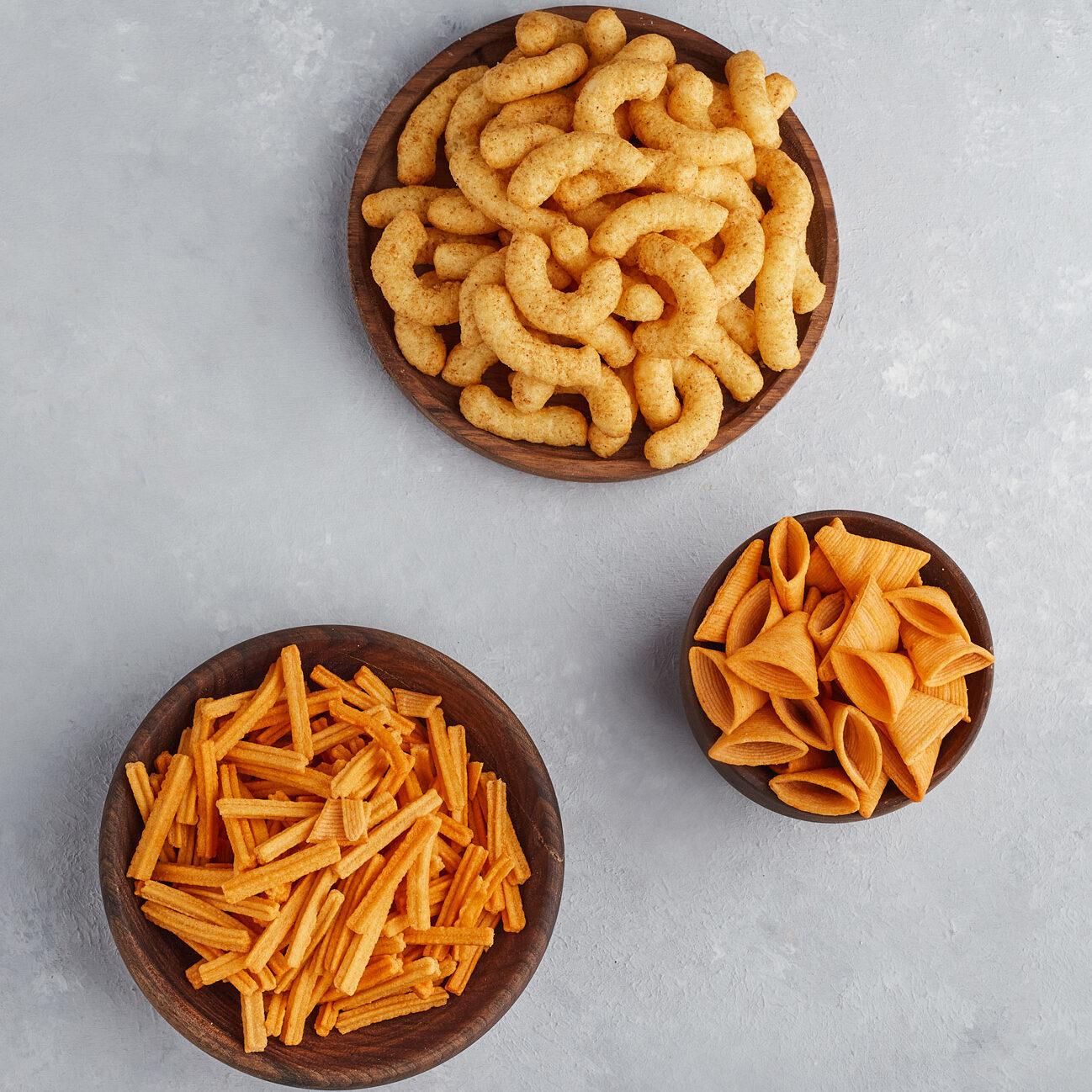

Core
Crunchiness through controlled expansion and drying.
Flavour
Matte or glossy, light or heavy coating, soft or spicy, use of visuals.
Stability
No smearing on the package. No oxidation.
Key quality parameters
One of the universal application.
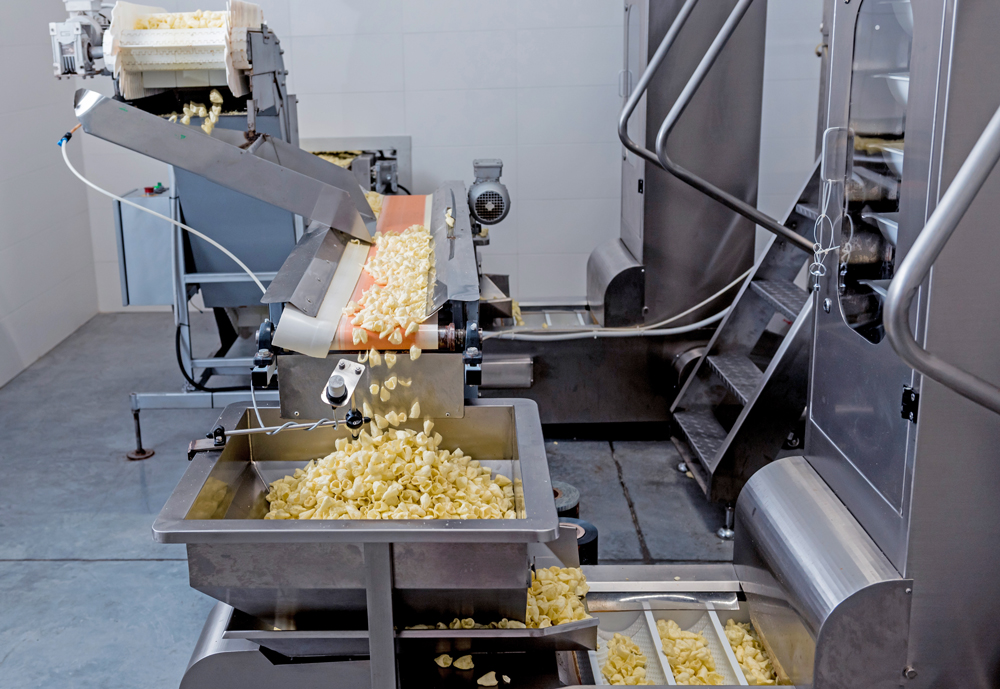

Ingredients
Flavour selection can be relatively basic or sophisticated to follow trends.
Design
Machine design, volume, accessories: tumbler length, diameter, and baffles design.
Operation
Mechanical energy used for mixing and dispersion: tumbler tilt angle, tumbler rotation speed.
APPLICATION
Discover more applications

